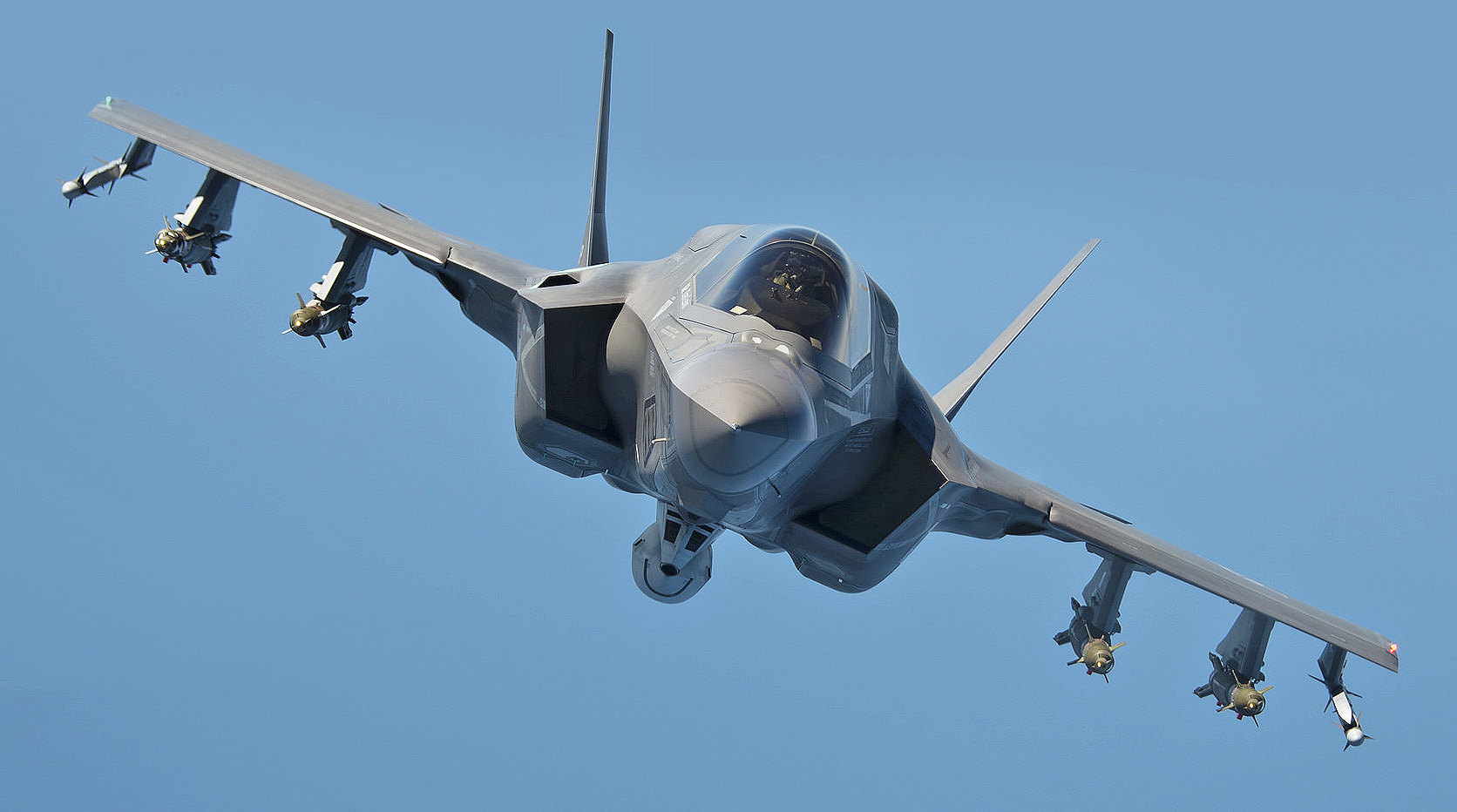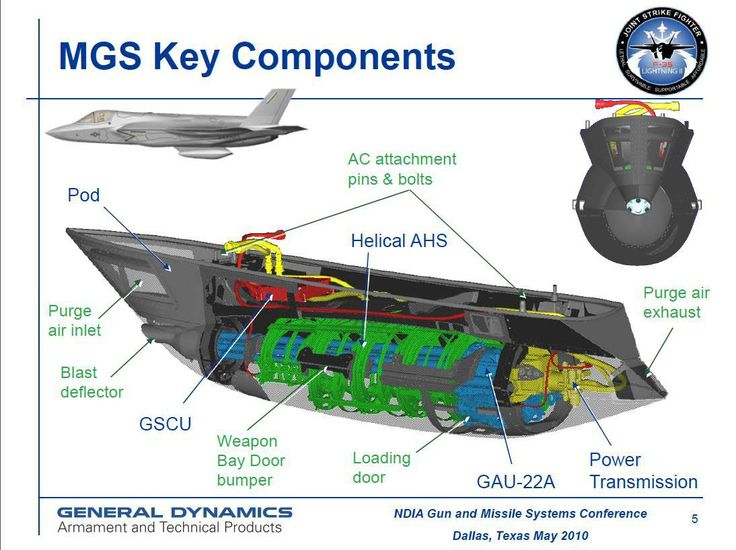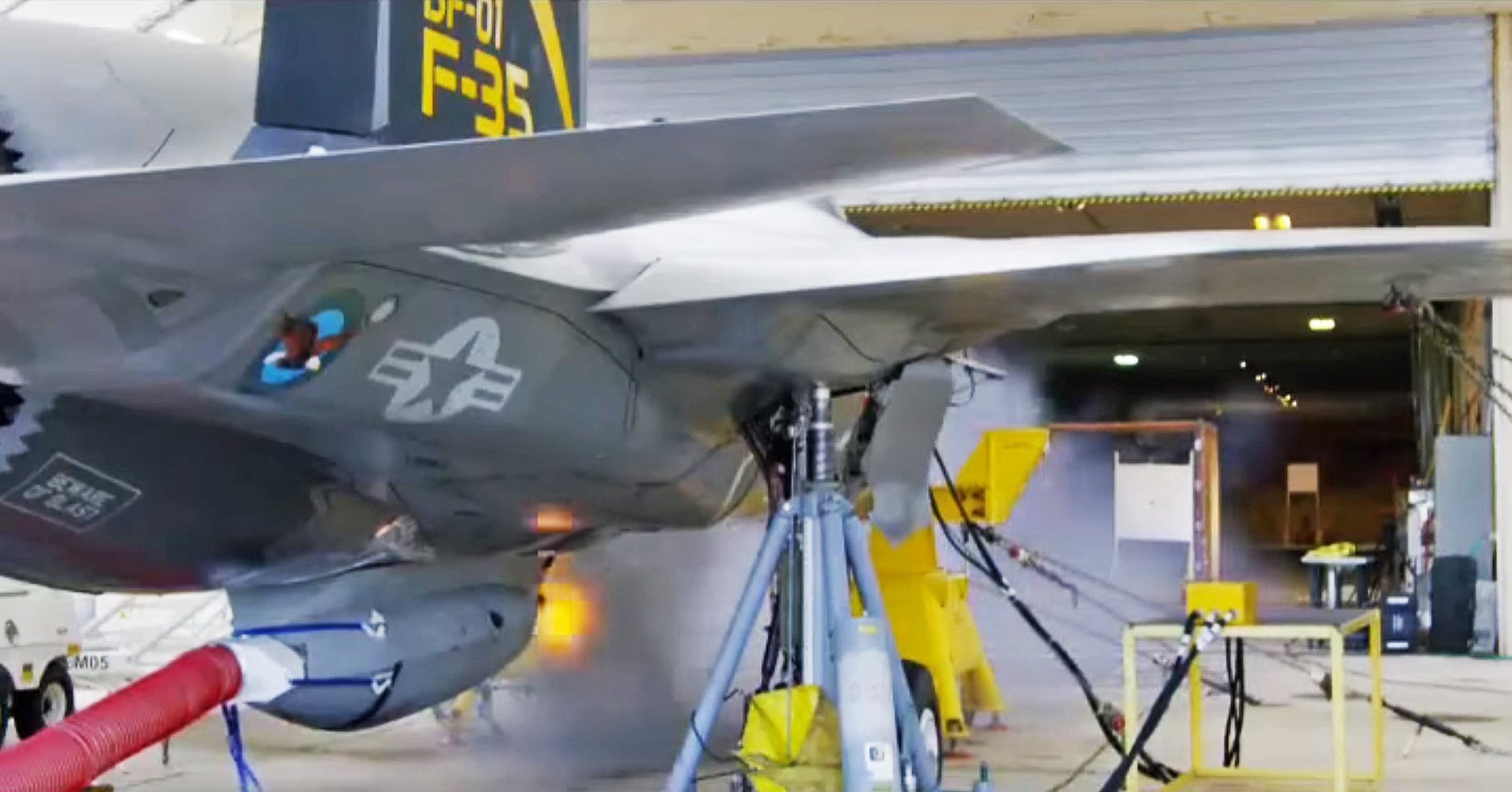The F-35A has already fired its internal GAU-22 25mm cannon both on the ground and in the air, and now the gun pod intended for the B and C models, which lack an internal cannon, is being test-fired on the aircraft for the very first time. The gun pod is housed in a semi-low observable (stealthy) enclosure attached to the F-35B and C’s centerlines, between the weapons bays. The gun’s “common” enclosure design can also be used to house other bolt-on systems in the future.

The GAU-22 is actually a lighter, four-barrel (instead of five) version of the GAU-12 Equalizer cannon that’s pod-mounted on the AV-8B Harrier and also found on the AC-130U gunship. The F-35’s gun pod holds 220 rounds of 25mm ammunition in a helical magazine that spirals around the gun itself and has a rate of fire of around 3,000 rounds per minute. This equates to about 50 rounds per second, or half the rate of fire of the M61 Vulcan 20mm cannon found on all other American jet fighters.
For what the GAU-12 lacks in rapidity it makes up for in destructive power. Its 25mm ammunition has a far greater effect than its 20mm little cousin. This makes it more ideal for attacking ground targets, but less so for close-in dogfights with other aircraft.

With 220 rounds available in the F-35’s gun pod, the pilot has 4.4 second of “trigger time” until the magazine runs empty. This equates to about four short trigger pulls if the pilot is miserly. The F-35A, with its internal cannon, carries even less ammunition—only 182 rounds—equating to about three trigger pulls at best. In comparison, the Harrier carries 300 of the same 25mm rounds in its cannon pod system.

The A-10, with its massive GAU-8 Avenger 30mm cannon and 1,174-round magazine offers a whopping 12 to 15 trigger pulls, and much more punch that the 25mm—although comparing the two really isn’t t fair. The F-35 is only competing with the A-10 in the close air support department because the USAF pitted them against one another. Not just that, but the USAF already has a miserable record when it comes to trying to justify the A-10’s retirement by, in part, by strapping a gun pod onto a much more fragile fighter.

In the long run, at least the F-35A has an internal cannon, and its B and C variant brethren have the option to trade some stealthiness for one of their own. Still, it would have been nice to see at least the C model get an internal gun like its USAF comrade.

For now, all the gun-slinging is for physical testing because the software needed to aim and employ the cannon in combat is still far from complete and vetted. This is known as the Block 3F software suite that will give the jet its true baseline combat capabilities. This was originally seen as the minimum threshold for declaring initial operating capability by the Air Force, but the bar was lowered as delays piled up.
Now, the F-35A will enter service with the less capable Block 3i software suite. As for when Block 3F will be ready, well, the USAF promised 2017, but that guarantee is eroding fast, with only testing of the 3F software suite scheduled to commence in the early part of 2018.
Yes, that means the USAF will declare the F-35A operational anytime now, even though its pilots can’t even aim and fire its internal cannon.
Contact the author: Tyler@thedrive.com
